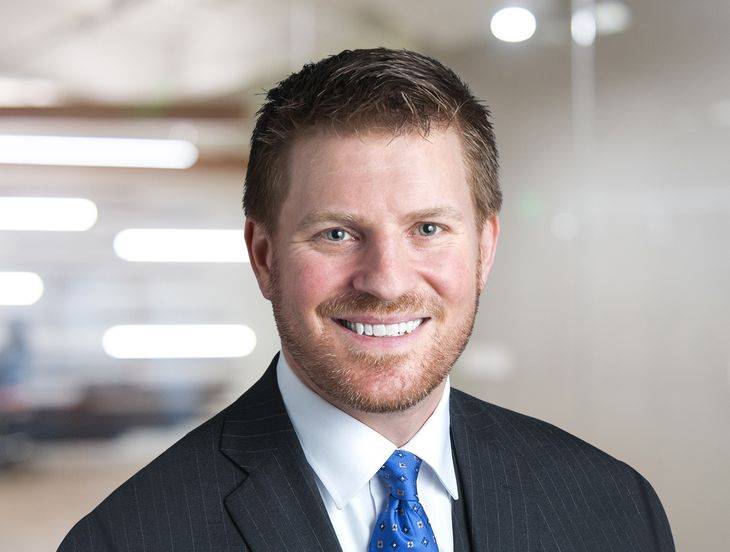Develop A Proactive COVID-19 Workplace Safety Plan Or Risk Employees Seeking Court Intervention
Insights
5.02.20
A group of employees concerned about their workplace safety amidst the COVID-19 pandemic just filed a legal action against their employer seeking a court order that would require the company to comply with federal safety guidelines. If you operate an essential business or are already starting to contemplate reopening your doors and ramping up activity, you will want to pay particular attention to this lawsuit and the standards for being subject to a potential injunction. Being proactive and developing a thorough workplace safety plan now will help you avoid legal troubles down the road.
What Are The Employees’ Concerns?
The COVID-19 pandemic has affected most sectors of the economy, but the meatpacking industry has been especially impacted because of its status as an essential business, as well as the inherent nature of meatpacking work. A number of Smithfield Foods employees took their concerns to a federal court in Missouri.
In their lawsuit, they allege that Smithfield has failed to follow Centers for Disease Control and Prevention (CDC) guidelines by failing to provide sufficient personal protective equipment (PPE), forcing them to work shoulder-to-shoulder, and scheduling working time and breaks in a manner that do not allow for proper social distancing. The employees further allege that Smithfield does not provide time for employees to wash their hands with sufficient frequency. Additionally, they claim they are allegedly encouraged to come to work when sick, and that Smithfield has purportedly failed to implement procedures for preventing sick employees from entering the workplace.
[Ed. Note: The court ruled for the employer and dismissed the action on May 5. A brief discussion of the judge’s reasoning is included below.]
What Do The CDC And OSHA Recommend?
The CDC and the Occupational Safety and Health Administration (OSHA) recently released guidance for the meat and poultry packing industry to address the unique challenges it faces in light of COVID-19. There are a number of recommended practices that can be applicable to any work setting:
- When possible, the joint release encourages employers to rearrange workplaces to maximize the space between workers. This may require changes in production practices, including reducing the number of employees per line or installing physical barriers between employees.
- To promote social distancing, employers are encouraged to stagger break times or create additional, temporary break areas. Employers are also encouraged to stagger when employees arrive and leave the workplace to avoid congestion.
- The CDC recommends cleaning and disinfecting commonly touched surfaces frequently. Routine sanitization of work and common spaces is also recommended. Workers performing these additional cleaning and disinfection tasks may need additional PPE and training.
- Employers should encourage employees to follow coughing and sneezing etiquette. The joint guidance suggests that employers should promote personal hygiene by providing additional short breaks to allow employees to wash their hands more often.
- The joint guidance encourages employers to implement a comprehensive screening and monitoring program to prevent COVID-19 from entering the worksite. Employers should encourage employees to stay home if they feel sick or are exhibiting any symptoms related to COVID-19. Employers should consider implementing pre-shift screening, including taking employees’ temperatures and not allowing employees with symptoms or a fever of 100.4 degrees Fahrenheit or greater to enter the workplace.
What Hurdles Do Employees Face In Receiving Injunctive Relief?
What makes this case unique is that the workers do not seek money damages. Instead, they are seeking an immediate injunction that would require Smithfield to comply with the CDC and OSHA guidelines, as well as orders of state public health officials.
One danger of taking this approach is that it can be difficult to obtain short-term injunctive relief. This is typically described as an “extraordinary” remedy. There are a number of showing that the plaintiffs would have to make, each of which have been contested by Smithfield. You should familiarize yourself with these factors and adjust your practices accordingly to minimize your chances of facing such liability.
- The plaintiffs have to show a likelihood of success on their claims for public nuisance and failure to provide a safe workplace. Smithfield argues that it an essential business and, moreover, that President Trump recently used the Defense Production Act to classify meat processors as critical infrastructure so as to keep supermarket shelves stocked with meat. It also argues that it has complied with safety requirements (the competing affidavits offered by the parties are quite detailed) and that OSHA’s regulations preempt the workers’ claims.
- The plaintiffs have to show the existence of irreparable harm. Smithfield points to the absence of confirmed COVID-19 cases at the plant at issue and also that the workers have an existing remedy through OSHA. The workers’ challenge is to get past the argument that they have only showed hypothetical injury – a common defense in injunctive relief cases – and therefore to convince the judge that the threat of community spread is imminent.
- The plaintiffs have to show that the balance of harms support their requested relief. Of particular interest here is the workers’ request that its experts should be permitted to inspect the plant to determine additional safety steps that Smithfield would need to take. Smithfield argues that this would threaten its operations and embolden other plaintiffs, thereby threatening the country’s meat supply.
- The plaintiffs have to show that the injunctive relief is in the public’s interest. This is the crux of the lawsuit. The workers argue that Smithfield is putting its own workers at heightened risk for contracting COVID-19 and therefore that it is increasing the likelihood of a community spread. Smithfield counters that it is an essential business, that there is a public interest in OSHA being the regulator of workplace safety, and that the plaintiffs’ proposed remedies would create uncertainty in the industry.
The court held a hearing on the plaintiffs’ request for immediate injunctive relief on April 30 and a ruling should be forthcoming in the near future.
[Ed. Note: Judge Greg Kays of the Western District of Missouri dismissed plaintiffs’ complaint on May 5 pursuant to the primary-jurisdiction doctrine. The court held that OSHA has jurisdiction over the issues raised by the workers. In addition, the court held that it would have denied the request for injunctive relief even if it had proper jurisdiction because: (1) the potential injury described by the workers was too “speculative”; (2) Smithfield has taken remedial steps to reduce the risk of coronavirus transmission; and (3) plaintiffs’ proposed injunctive relief was not sufficiently specific.]
What Other Legal Exposure May Employers Face For Not Following CDC And OSHA Guidance?
Workers’ compensation insurance generally covers injuries and illnesses that are caused “unintentionally” by an accident or exposure in the work environment. However, because the damages recovered in a workers’ compensation claim are generally capped by statute, plaintiffs’ lawyers may ignore the statutory workers’ compensation system. They may instead file a lawsuit in court claiming intent or willfulness, as they recognize that the potential recovery may be much higher. In some states, the worker may file both a workers’ compensation claim and a lawsuit. These lawsuits will likely take the form of a tort claim of negligence or wrongful death in civil court.
To avoid potential liability, employers should following the CDC’s Interim Guidance for Businesses, including best practices for social distancing, Guidelines for Cleaning and Disinfecting the workplace, and quarantining employees who have an exposure to a confirmed COVID-19 case, found at the CDC’s Public Health Recommendations for Community Exposure. Employers should ensure that employees are provided and properly wearing all required PPE.
What Should Employers Do?
You should be proactive in implementing policies and procedures to protect employees from exposure to COVID-19. These policies and procedures should contemplate the guidance issued by the CDC, OSHA, and state and local public health orders. You should not wait until employees seek a court’s intervention to implement necessary protections.
While the meatpacking industry is the proverbial canary in the coal mine – as its companies have been operating at full capacity throughout the crisis – other businesses are not immune from similar concerns. The legal issues that Smithfield is confronting will likely be faced by a number of businesses across a variety industries as they reopen and or ramp up operations in the coming weeks and months.
As you begin the process of reopening, you should familiarize yourself with our alert: 5 Steps To Reopen Your Workplace, According To CDC’s Latest Guidance. You should also keep handy our 4-Step Plan For Handling Confirmed COVID-19 Cases When Your Business Reopens in the event you learn of a positive case at your workplace. For a more thorough analysis of the many issues you may encounter from a labor and employment perspective, we recommend you review our FP BEYOND THE CURVE: Post-Pandemic Back-To-Business FAQs For Employers and our FP Resource Center For Employers.
Conclusion
Fisher Phillips will continue to monitor the rapidly developing COVID-19 situation and provide updates as appropriate. Make sure you are subscribed to Fisher Phillips’ Alert System to get the most up-to-date information. For further information, contact your Fisher Phillips attorney, or any member of our Post-Pandemic Strategy Group Roster.
This Legal Alert provides an overview of a specific developing situation. It is not intended to be, and should not be construed as, legal advice for any particular fact situation.
Related People
-
- Michael P. Elkon
- Partner
-
- Nicholas S. Hulse
- Partner

